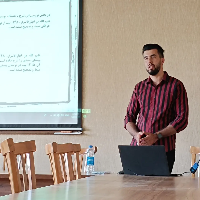Types of Semantic Deviation in Nasrollāh Monshi's Kalilah va Demnah
Language, as the primary medium of literature and communication, plays a crucial role in creating literary works. Among the various tools writers and poets use to harness language's power and enrich their work is semantic deviation, a concept that emerged with the formalist school of literary criticism. Formalism brought fundamental changes to literary studies, asserting that every literary work is independent and self-sufficient. The school aimed to break free from past literary norms and boundaries, challenging conventional linguistic and literary principles. Formalists argued that literature's essence lies in deviating from these conventional language boundaries. According to formalists, style emerges from deviating from standard language use. They posited that a literary work's imaginative quality stems from surpassing common language norms for artistic purposes. Semantic deviation, in particular, became a fundamental tool for writers and poets to create novel meanings in their work. This perspective led to the introduction of the concept of defamiliarization in literature, emphasizing the idea that literary language should make the familiar strange, thereby enhancing the reader's perception and engagement with the text. Shklovsky introduced the concept of defamiliarization as a technique writers and poets use to make their texts appear unfamiliar to readers. This view, held by Russian formalists, was later challenged and expanded by the Prague school of linguistics. Unlike the formalists, who focused solely on defamiliarization in literary texts, the Prague school considered all textual elements, both familiar and unfamiliar. They argued that these elements are intertwined and mutually dependent, making it impossible to examine them in isolation. This holistic approach led to the replacement of defamiliarization with the concept of foregrounding. When a writer employs defamiliarization techniques, it creates a static and conflicting relationship between these mechanisms and other textual elements. However, foregrounding affects the overall structure of the text more dynamically. According to Leach, foregrounding occurs through two main methods parallelism and deviation. Parallelism can be thought of as an unexpected degree of regularity in the text, whereas deviation is an unexpected degree of irregularity in the text. This perspective provides a more comprehensive framework for analyzing literary techniques and their effects on the text as a whole. Non-normativity in literature occurs when a writer or poet uses terms and combinations that break the boundaries of standard language, challenging the reader's mind. This deviation from norms can be classified into eight main categories: lexical, syntactic, phonological, graphological, semantic, dialectal, stylistic, and historical, all of which affect meaning in various ways. Semantic deviation involves using phrases and sentences in novel ways, creating meanings that differ from their conventional usage in standard language. This is achieved through innovative semantic relations and imaginative forms. Nasrollāh Monshi's Kalilah va Demnah is notable for its significant use of imaginative elements, making it an important text for understanding the linguistic and literary style of 6th-century prose. This study aims to reexamine Kalilah va Demnah through the lens of semantic deviation, using the model presented by Farzān Sojudi. This study employs a descriptive-analytical approach, explaining each type of semantic deviation based on Sojudi's perspective. Using a library research method and focusing on Nasrollāh Monshi's Kalilah va Demnah, the study categorizes and presents numerous examples of semantic deviation according to the specified theory. The research findings indicate that Nasrollāh Monshi consistently used semantic deviation in Kalilah va Demnah to enhance the text's imaginative quality and make better use of language. The frequency of semantic deviation in this work is higher compared to other types of norm deviation. This study contributes to our understanding of the literary techniques employed in classical Persian literature and highlights the importance of semantic deviation in creating ornate prose.
-
Study of Nafsat al-Masdor in the light of Pierre Giraud's Social Semiotics
*, Nahid Ahmadi
Journal of Societies in Persian literature, -
Examining the secondary purposes of interrogative sentences in the second book of Masnavi Ma'ani
*, Nahid Ahmadi
Journal of Semantic Research of Literary Texts,


